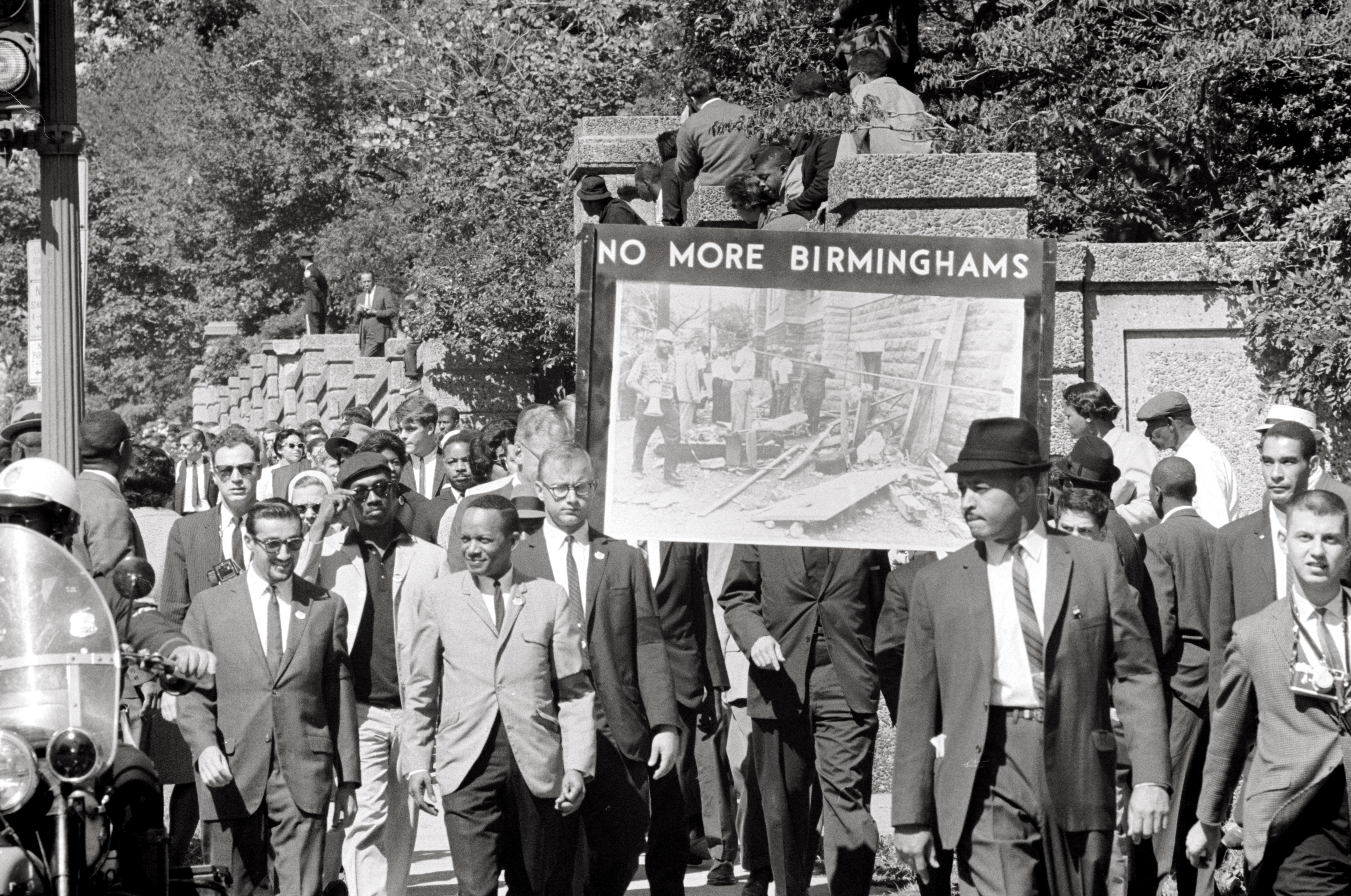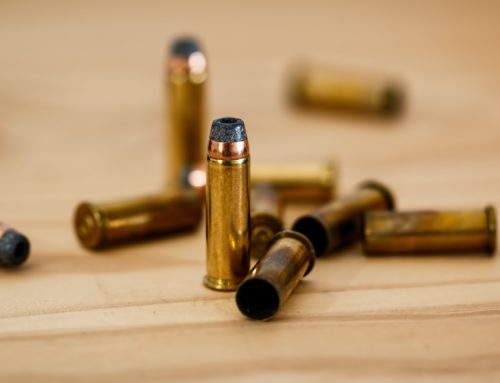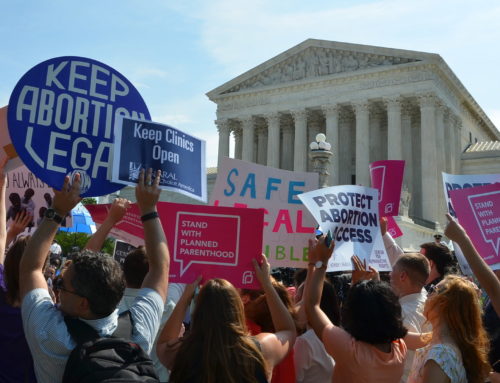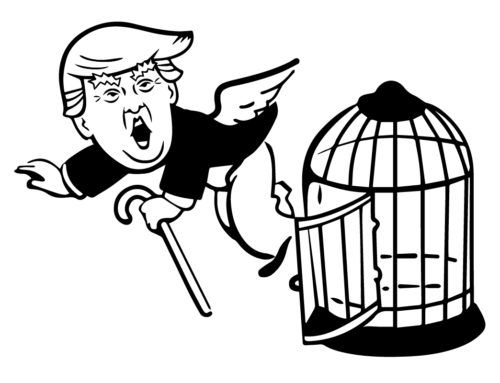By: Caleb Mills
It was September in Birmingham, crisp northern winds rolling down from Appalachia to meet the heat of the American South. It was clear fall was coming. And with fall came hopes of a new year, and perhaps a more peaceful time for the African-American community living in one of America’s most violent cities.
Whatever doubts many had about the direction of the nation – one that seemingly had no place for a black man seeking equality – children still played, schools still taught, and church bells could still be heard.
One of those children was Cynthia Wesley. Cynthia was a pretty girl, her dimpled face in pictures are caressed with dark lavish curls and a toothy grin that, sadly, seems out of place on someone who grew up in those times. Her eyes were large and dark, almost always dancing off the smile on her face every time the camera went snap.
Wesley grew up in a town charged with animosity based on color and sex, so for the little 9th grader in that historic year of 1963, the innocence of childhood probably did not completely shield her from the struggles her community faced. Certainly with friends like Denise McNair, her 11-year-old Sunday school buddy who dreamed at a very young age of fighting for Social Justice, she must have heard the stories of those killed and persecuted for the color of their skin; the color of her skin.
However, Cynthia wasn’t into all that. She wanted to help in different ways. Watching her parents example growing up, Cynthia longed to teach like her father and mother. She wanted more than to be defined by centuries of racial prejudice. She wanted to be more than a little black girl.
Birmingham couldn’t stop her from dreaming; but it could do something far, far worse.
The 15th was a Sunday, and just like every Sunday in Birmingham, bells were ringing across the city, calling finely-clad church-goers, black and white, were on their way to attend worship services. In the 16th Street Baptist Church, Cynthia and three other girls, Addie Mae Collins, Denise McNair, and Carole Robertson, were in the basement changing into their choir robes, tying each other’s dress sashes, maybe giggling at gossip, maybe chatting about schoolwork.
Whatever they were doing, they never finished.
The room erupted into a hellish landscape of screams, fear and terror as 15 pieces of TNT blew a hole in the church’s basement. Fire enveloped the room, and the dreams 4 little girls were crushed forever. Science class had lost their best student. The world was deprived of a future teacher. And 8 parents lost one of the few things that provided them with a glimmer of light in those dark times.
There was nothing special about the 16th Street Baptist Church bombing. It was the latest in a heinous string of bombings that had earned the city the nickname Bombingham. And although it shocked the nation, very little changed. This was just another day in Birmingham, Alabama.
As Alabamians prepare to go to polls on December 12th to elect a new senator, it’s easy to get caught up in the mindset that nothing ever changes: Alabama is a place filled with racial tension, poverty, and a sad history representing America’s ultimate sin. And in terms of day-to-day politics, the Republican has it in the bag. After all, it is Alabama.
However, the race between civil rights lawyer Doug Jones and former State Supreme Court judge Roy Moore is tighter than expected according to recent polls and analysis. This is historic in several ways. It’s the first time in decades a Democrat has a chance of winning. And the race’s tone harkens back to days long past, with Moore clearly appealing to a mindset molded by Nixonian southern politics.
To see why Doug Jones really matters, you have to understand what he’s running against. And that means revisiting the 1960s, when southern politics realigned, creating the worldview in which Roy Moore operates.
Today, we all know the story of the 1960s; perhaps a little too well. Martin Luther King Jr, fights the good fight, and the Civil Rights Act is born, a bipartisan effort that transcended historical differences, in both race and politics. Or so we like to think.
In reality, this wasn’t at all the case. For years after the 16th Street Baptist Church bombing as well as hundreds of other instances of violence, southern politicians still remained firmly entrenched in the politics of racial seclusion. During the passage of the Civil Rights Act, a block of 18 staunch segregationist democratic senators, along with one republican, came out against the bill.
“This so-called Civil Rights Proposals, which the President has sent to Capitol Hill for enactment into law, are unconstitutional, unnecessary, unwise and extend beyond the realm of reason. This is the worst civil-rights package ever presented to the Congress and is reminiscent of the Reconstruction proposals and actions of the radical Republican Congress.” Strom Thurmond bellowed in the halls of the senate chamber shortly before the bill passed.
Lyndon Johnson’s insistent and constant support for the Civil Rights Act had just as much to do with its passage as the stories of those little girls had been killed years before, and both paid a price in a manner of speaking. Johnson’s push for the bill alienated a large portion of southern conservative democratic legislators, and more importantly, their constituents.
The Civil Rights Act was the final nail in the coffin of southern Democratic loyalty, with many lawmakers such as Thurmond switching party affiliation from Democrat to Republican. But the hammer had been swinging since the 20s. The party’s nomination of its first catholic, Truman’s desegregation of the military, Kennedy’s rebuke of traditional views on race, had all been leading up to this ideological Ragnarok the party now faced.
The uneasy coalition, that had dominated the nation’s politics for millennia, between the Dixiecrat and the liberals of the party had finally broke. Like a classic Jim Crow prophecy, over 100 years after the first Democratic Party schism over race, they faced their second one.
The aftermath of the falling out left the south feeling betrayed and on the run, akin to the cultural and societal isolationism they employed after the Civil War. It brought with it a defensiveness of history and culture, the good and bad, an issue that would be amplified by Republican strategists looking to pick up a quick vote.
In courting disaffected Dixiecrats, the GOP was simply building off a foundation that southerners had laid themselves. A sulking mentality, defined by the belief that once again the filthy Yankees to the north interfered where they weren’t wanted, assisted by ungrateful African-Americans seeking more than what was natural to be given to them. This field of self-taught righteous indignation provided fertile ground for seeds of nativism. It’s in this atmosphere that Nixon dyed the south red and changed the course of history.
“You understand what I’m saying? We knew we couldn’t make it illegal to be either against the war or black, but by getting the public to associate the hippies with marijuana and blacks with heroin. And then criminalizing both heavily, we could disrupt those communities,” explained Nixon’s domestic policy chief John Ehrlichman.
Nothing could express the charter of the Southern Strategy more than that conversation Ehrlichman had with his interviewer. The essence of it expanded far beyond just Dixie, it’s cold white fingers touching Nixon’s precious ‘silent’ majority.
Its message was simple and its implementation swift, the cogs of the President’s machine performing their mechanical duty with ease. Nixon’s campaign took advantage of 10 years of dramatic social and political progression, using it as an example of destabilization in America.
Groups like the black panthers, riots in the streets against what minorities perceived as institutional racism, and the anti-war movement proved valuable for the campaign. It wasn’t even necessarily a rejection of what those groups were fighting for; it was more how the Nixon campaign painted them doing it. The extremities of the 60s and 70s already made many feel that traditional America was quickly fading, so when the campaign tinged that biased picture even further, it was enough for people to check the box on the ballot that read Nixon.
Nixon and his campaign knew that they didn’t have to fight against integrated schools or water fountains to win the southern white conservative vote; all they needed was to associate those advancements with the slow recession of their own culture dominance.
They needed to implant a sense of desperation based on the only other thing that divided African-Americans and whites in the south besides color; culture. A black boy didn’t need to be pictured sitting next to a white kid in class; they needed to be smoking a joint in a back alley. A woman didn’t need to pictured casting a ballot; she needed to be seen protesting loudly in the streets, with ‘feminist’ plastered across her open chest. A Hispanic didn’t need to be seen as any less smart than a Caucasian; just as more at home in the fields working alongside their fellow countrymen.
Nixon’s strategy didn’t fundamentally change anything about what southerners already thought of minorities; it only served to provide an alternative way to justify their worldviews outside of blatant racism, which still plays a part in the region’s political foundation.
The subsequent result of the strategy eventually turned the south red, but more importantly, revolutionized how southern white conservatives saw themselves and their country. With no languishing guilt or even any widespread urgency to adjust the beliefs or correct the institutions that inspired those terrorists to commit the 16th Street Baptist Church bombing, or any other instance of violence against African-Americans, they latched on to this new concept of preserving their own ‘white’ European culture; even at the expense and seclusion of anyone who wasn’t part of that group.
To southern conservatives, this meant nothing was too bipartisan to vilify or too sensitive to address; so naturally they didn’t shy from protecting statues of segregationists and attacking sports players for exercising constitutional rights. This also meant that institutions like the NAACP or the Southern Poverty Law Center, both devoted to the very concept of helping minorities, were also targets.
In this way, Nixon’s strategy, vile as it may seem, is without a doubt the most consequential political maneuver in modern American history, as it defined and bred a new generation of Republicans, free from any of the ethical or moral standards previous ones had to meet. This new generation, which first became politically active during the Speakership of Newt Gingrich and presidency of Ronald Reagan, bought heart and soul into the America depicted by Nixon’s propaganda machine.
Despite inheriting the Nixonian view that America’s white ethnic European Judeo-Christian heritage was the only one that had any place in the homeland, they certainly didn’t catch on to any of Nixon’s other policies such as environmentalism or responsible taxation. They seemingly aligned purely with the general theme of Nixon’s campaign ads, and then let the Reagan years define specific policy points, combining Nixon’s culture ‘wars’ with Barry Goldwater’s economic laissez faire positions to create a hybrid Conservative/Nativist wing of the party; a monster that would haunt Nixon’s moderate wing for decades.
It was this nativist revision of antebellum Alabama that millions of Americans like Roy Moore grew up in and were shaped by, particularly with the notion that there is no wiggle room for compromise or acceptance, only dominance. That only you can be right and therefore, negotiations are inherently unneeded. Mix that with a dash of Evangelicalism, and you’ve created a nasty partisan cocktail called southern politics.
It’s that scent of desperation, which can be whiffed miles away from where Moore stands, and his contempt for anything he perceives as a threat to himself and his own ambitions (Such as the federal government, laws he disagrees with, equal rights, science, etc.) that pushes him and his followers to make sure nothing is out of the realm of what they will reject without a second thought or any expected sense of introspection.
Roy Moore is like that cult-leader in movies who believes his own messages of eternal fire; except in this case, the cult is the Evangelical/Nativist cordial and the eternal fire is increased welfare spending and Affirmative Action programs. If he can’t find something to inspire fear in his followers, oh don’t worry. Conservatives seemed to be quite skilled at that. In fact, they have quite literally left no corner of American Society unearthed in ways to influence our voting patterns – Disney Princesses have even felt the burden of being labeled liberal hogwash in recent years.
Maybe the truly alarming part is the fact that nothing Moore is saying is either original or even the worst things you can hear south of the Mason-Dixon.
Jessie L. Hart, a 2004 Republican nominee for Congress in Tennessee, openly backed the usage of eugenics against “less-favored races” (Which he defined as those stemming from the “Orient” or Africa). Hart enjoyed the support of many white supremacist groups and forums, including Storm Front. Unfortunately, it seemed a man who believed in the systematic elimination of non-western ethnic groups had a place in the Republican Party.
Another horrifying story from the bowels of the Republican Party’s southern wing comes from way back in 2010 when Jim Knotts was criticizing Nikki Haley in the South Carolina Republican party’s primary for governor. “We’ve already got a raghead in the White House, we don’t need another raghead in the governor’s mansion,” Knotts said referring to both Haley and President Obama, using a common racial slur. Amusingly enough Haley, the daughter of Indian immigrants, ended up trouncing Knott’s preferred candidate.
It’s not just Moore who fell victim to the extremism of the 1970s, but a whole slew of future leaders of the south. As grotesque as many may find him, the sad fact is the only difference between him and many of his less humane colleagues is the national coverage he’s getting.
However, there’s a bit of truth to the fact that the culture and lifestyle, as well as the politics that accompany it, of Moore’s Alabama are gradually fading, leaving a grain of truth in what motivates Moore to speak as if the balance of humanity hangs on his election. Unfortunately, this only strengthens the already prevalent trait of treating compromise as a betrayal and of working with the opposition as hobnobbing with the enemy. The most effective lie is always one with a little of truth to it.
Luckily, even for Alabama, Moore is proving to be a bit extreme. Somewhere between saying 9/11 was punishment for homosexuality, defying the United States Supreme Court, referring to Native Americans as ‘Reds’ and Asians as ‘Yellows’, making bizarre claims that sharia law was prevalent in certain communities in the Midwest, demanding that a Muslim not be allowed to serve in congress, and that former U.S. President Barack Obama wasn’t born in America, and seemingly countless allegations of sexual assault, it seems a lot of Alabamians began noticing the alternative; Doug Jones.
Jones, the same lawyer who brought those 4 little girls who were killed in the 16th Street attack justice, has served as a Civil Rights attorney and spent much of his life fighting against and condemning characteristics of the south that Moore so desperately seeks to protect; he’s essentially the anti-Moore.
Doug Jones’s campaign has been proving to be a unique creature in the zoo that is Alabama’s political arena. Unlike a lot of Democrats in his state, Jones is embracing his past in protecting Civil Rights and openly challenging a Republican’s cultural grip on Dixie’s heart, a novelty considering the long tradition of the Conservative being the ‘cooler’ of the two options.
The Republican has almost always been the candidate who connected with the constituents he’s wooing on a cultural level. The one brandishing a firearm, a big red pickup with a ‘All Lives Matter’ bumper sticker adorning its tailgate, and listening to 90s country gold from his XM radio. He’s the guy with a quick handshake, calloused hands, and a firm grip reaffirming what you already expect. He knows the meaning of hard work. He can walk into any diner, any barbershop, any white middle-class home and make you feel like you’re talking to a relative. You don’t just want to vote for him; you want to grab a beer and watch the Crimson tide play the Volunteers.
In a very real sense, that’s more of a common political style in southern politics than an attribution to any political party. Bill Clinton and Jimmy Carter, Democratic Presidents from Georgia and Arkansas, mastered this art long before today’s present Republicans.
For some odd reason however, liberal and progressive democrats in these same towns fail to have this effect on people. They come off as elitist, as out of touch, as bringers of unwelcomed change. They’re the studious guys who talk too much, perhaps listen too little, and would rather discuss policy points then shoot a Glock in someone’s backyard.
Now while obviously this doesn’t apply to every practitioner of politics in the American South, it ties eerily well into the cultural accent Alabamian politics already has. Not only that, but a recent congressional race in Georgia has already provided a fine example of this problem.
The Georgia 6th special house election, which pitted Republican Karen Handel against Democrat Jon Ossoff, proved fatal to any mirage liberals might have had over southerners turning away from Trumpian politics. Handel, who enjoyed the unabashed support of the President and Vice-President, cruised to victory in a surprisingly decent sized margin.
Some polls had showed the race closer than expected but in a district predominantly controlled by the Middle-Class suburbs, democratic strategists failed to successfully connect with the voters in a way required for southern politics
Ossoff was a graduate from the London School of Economics, looked like he belonged in a University’s faculty rather than playing the part of a candidate, and was way out of touch with moderate Republican votes he needed to sway in order to win; he didn’t even live in the district. While Republicans skillfully painted him in broad strokes as Nancy Pelosi’s personal waterboy, Democrats opted to simply throw money at the problem.
The story of Ossoff is representative of hundreded of doomed Southern Democrat candidates, shot down in droves by Republicans more skilled at cultural warfare and the art of a good handshake.
But Doug Jones’s is different. His college yearbook doesn’t reside in a library at Stanford or Harvard, but in the University of Alabama. His life’s work did not bring him into the spotlight as an intellectual, but as a lawyer seeking to help the little guy. He’s a progressive with an accent, and a liberal defined by Alabama, not in spite of it. He’s a southern solution to a southern problem.
This ability to connect where many have not has provided Jones with the ability to win where Democrats failed for decades, but also to openly lecture Alabamians on why the culture and beliefs of Moore represents the worst of what Alabama has to offer, not the best.
His dedication to “kitchen table” issues has only made his electoral chances even stronger, many of his ads also taking advantage of Moore’s extremism, presenting a mature contrast to Moore’s haphazard set of policies, as well as positioning himself as the anti-Washington candidate, a title which is normally only sought after by Republicans.
Considering he’s openly stealing Republican dissenters in one of America’s most conservative states without a hitch, it’s no surprise that polls are showing him catching up to Moore, a few even showing the race as tied.
Lying beneath the surface of politics besides the typical stratagem critiques, there’s something far more profound about this race than just numbers and handshakes: the fact that for once, there’s a chance for change. Doug Jones matters because he can beat Roy Moore, and he can do it without sacrificing ideas or giving in to the culture that created him.
Caleb Mills is a writer, analyst, and commentator from the American Midwest.
Image: Congress of Racial Equality and members of the All Souls Church, Unitarian located in Washington, D.C. march in memory of the 16th Street Baptist Church bombing victims on September 22, 1963. The banner, which says “No more Birminghams”, shows a picture of the aftermath of the bombing. Via Wikipedia










Leave A Comment